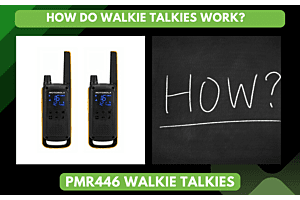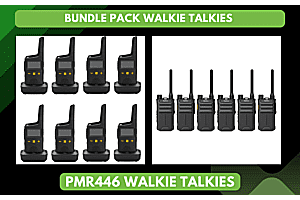
Walkie talkies, also known as two-way radios, have been a staple in short-range communication for decades. Despite the advent of smartphones and the internet, these devices remain relevant, especially in areas with limited cellular coverage or during outdoor activities like hiking and camping. But have you ever wondered how these handheld devices work? This article will demystify the science behind walkie talkies.
The Basic Principle
At their core, walkie talkies are essentially wireless, battery-operated radios compact enough to be carried by hand. They operate on specific radio frequencies to send and receive audio information. The basic principle involves converting sound waves into radio waves, transmitting them, and then converting them back into sound waves at the receiving end.
The Process of Communication
Transmitting a Message: When you speak into the microphone of a walkie talkie, your voice, which is a sound wave, is captured and converted into an electrical signal. This signal is then modulated with a specific radio frequency. The modulated signal is sent out through the antenna as a radio wave.
Receiving a Message: The process is reversed when receiving a message. The receiving walkie talkie's antenna picks up the transmitted radio wave. The radio wave is then demodulated to extract the original electrical signal, which is converted back into a sound wave through the speaker, allowing you to hear the transmitted message.
Key Features of Walkie Talkies
- Push-to-Talk (PTT) Button: This button is what makes a walkie talkie a two-way communication device. When you press the PTT button, the device switches to transmission mode. Upon releasing the button, the device reverts to receiving mode.
- Channels: Walkie talkies operate on specific channels within a designated band. All devices within a group must be tuned to the same channel to communicate effectively.
- Range: The range of a walkie talkie depends on its power output and the operating environment. While some devices can reach up to several miles, obstacles like buildings and trees can significantly reduce this range.
Conclusion
Walkie talkies are a marvel of communication technology, combining the principles of sound and radio wave transmission into a compact, portable device. Understanding how they work not only satisfies our curiosity but also helps us appreciate the technological advancements that make our daily communications possible. Whether you're an outdoor enthusiast, a professional in a field that requires short-range communication, or simply a technology aficionado, walkie talkies remain a fascinating and practical tool.




